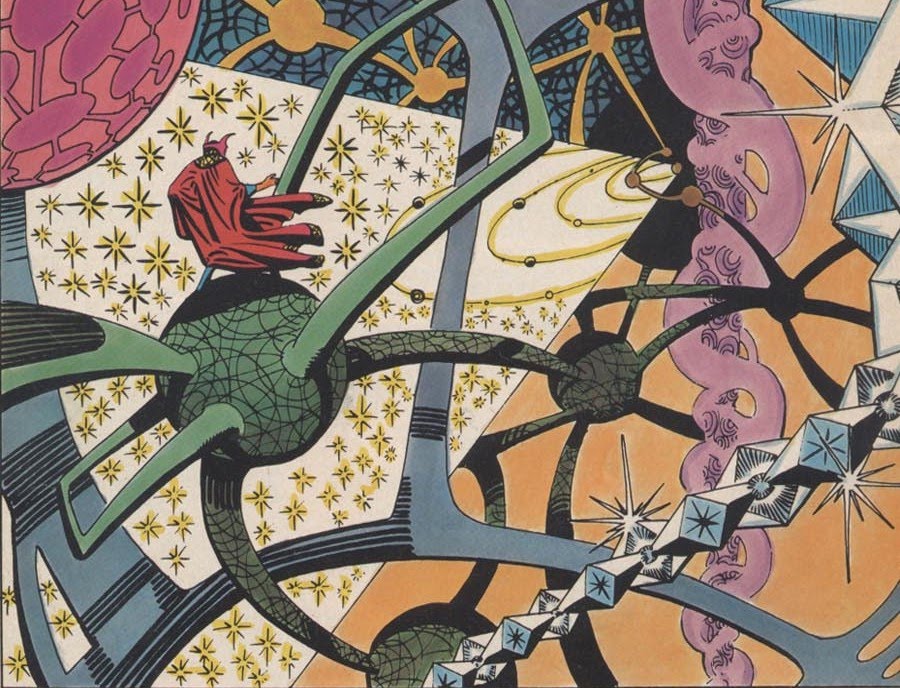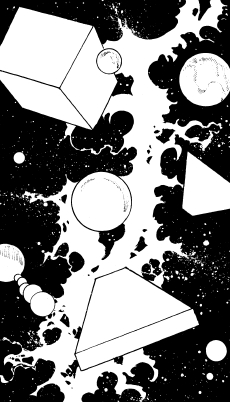

| - | - | - | - | - |
| - | - | - | - | Manual of the Planes |
Welcome to the AD&D game's closet.
<note: try for more Marvel here, just like more Dragon
for the WSG, and, more Central American for the DSG, and, more Pole Arms
for UA, etc.>
<in other words, try to draw on images that the original
author would enjoy>
My parents used to listen to the old radio show, "Fibber McGee
& Molly." One of the running jokes of this show was that a character
who had lost something would inevitably check the hall closet
(usu. over the shouted objections of the other characters.)
When the door was openend, out came the crunch and clatter of
the entire overstuffed closet disgorging its contents in a manner
that can best be seen in the imagination. Thus in our household, <>
any drawer or closet crammed full of haphazard material was
referred to as "Fibber McGee's Closet." (Perhaps some day this
phrase will take its place alongside the Hammer of Thor and
Zeus's Thunderbolts.)
In much the same fashion, the AD&D
system over the years
has treated the known planes of existence as holding bins for
every idea and adventure that did not quite belong in the Prime
Material Plane. We set down the astral method of movement to
the outer planes, then whisked individuals bodily into Lolth's
realm in the Queen of the Spiders. We placed the Ethereal plane
between the Prime and the elemental planes, then broke off pieces
of those planes for the elemental nodes in The Temple of Elemental
Evil.
The Negative and Positive Material planes moved from
being co-existing with the Prime to being part of the inner
planes, giving birth to the quasi-elemental planes in the process.
With additional books of monsters, we moved all manner of
slaad, modrons, and githyanki into these planes as visitors, then
moved entire pantheons to co-exist in the DDG Cyclopedia. <>
And for every adventure in every plane, another set of
effects on spell-casting was created.
This then, has been the AD&D game
closet; like Fibber
McGee's, it has been filled to capacity with the well-intended
thoughts of a decade.
And I have the pleasurable task of throwing open the door and
(provided I am not crushed by the bowling ball on the top shelf)
picking through and explaining the pieces.
It is a massive task. Consider, for example, that the planes are
infinite (except the demi-planes, but that's another story). Can these
regions be mapped? How to the Hells appear to descend and
the Heavens to rise? Where do the gods fo the ancient pantheons
live? Do they get along with each other? What about life on
those planes (gods need servants, after all)? How do you travel
through an infinite plane filled with elemental fire? Indeed, how do
you even survive on an infinite plane filled with elemental fire?
This book attempts to answer these questions and many more.
One of the basic assumptions of this tome is that what has been
written in the past is true, and our job is to explain it. The chief
reason is that the AD&D system is
a living and dynamic system
that is built upon the foundation of its past. While the game can
absorb any amount of new material, casting off pre-existing
material damages the system. My purpose is to reveal the
mysteries of the AD&D game without
voiding a majority of them. <>
One of the great attractions of the various planes is their
unknowable nature, though in many cases there is so much
unknown that DMs are forced to make their own guesses. This
sense of the unknown is a marvelous thing; it would be a shame
to lose it by fully explaining the intricacies of the planes. To that
end I have concentrated on the basics--survival, movement,
combat, and spells. Beyond this, the workings of each plane are
discussed in brief detail, allowing a taste of the wonder without
stealing the mysteries.
Miraculously, the rules and mechanics that goven the planes
have been kept to a small number that apply to all the planes of a
type (inner, outer, astral, or ethereal). A "Grand Unified Theory of
Spells" deals with the planar aspects of each type of spell, thus
reducing the number of special effect spells that could occupy
pages for every layer of the Abyss.
Finally, I'd like to address a touchy subject that usu. arises
when talking of outer planes and "gods" for campaigns. Though
I consulted many texts to gather the mythological and theological
info for this book, some topics just were not addressed in
these sources. When faced with the Q of what Indra's
realm looks like, <floating on a sea of milk, btw>
or the nature of Yggdrasil, or what is to be
found on each of the Seven Heavens, I employed a time-honored
DM process.
I made it up.
Yes, I admit it. To combine the various mythoi and beliefs into a
coherent system, I cahnged some things and added others. This
has been done for game balance, playability, and ease of pres-entation.
If you are looking for the accurate background on a particular
pantheon, there are many good source books on the mythoi
presented here.
We have opened the doors to the AD&D
game's closet--let's
find out what is in there!
Jeff Grubb

Thanksgiving, 1986
Despite the singular author credit on the cover, this project (and any
project of this size) is the result of the input,
advice, corrections, suggestions, and just plain hard work of a lot
of people, who in ways great and small have
helped bring this book to its present state. Several people deserve
special thanks.
To Mike Breault, who revamped the prose I am prone to when writing AD&D game material.
To Ed Greenwood, who produced the definitive dissertation on the Nine Hells.
To Roger Moore, whose equally definitive articles on the Astral plane formed the foundation of that section. He also reviewed that section and the section on Asgard.
To the people who reviewed the manuscript in its first draft: Dave Collins, Joe Karpierz, Ed Greenwood (again), Jim Ward, Steve Winter, and Mike Breault. Their comments and advice have made this text both readable and enjoyable.
To Mike Dobson, for telling me to avoid bogging down (too much) in the logic of the planes and to stress their sense of wonder and magic.
To Kate Novak Grubb, for putting up with a crazy writer during this period.
And to John and Patricia Grubb, who told their son about the closet of Fibber McGee.
Thank you!
Manual of the Planes Design: Jeff Grubb
Editing: Mike Breault
Cartography and Diagrams: Dave Sutherland
Cover Art: Jeff Easley
Interior Illustrations: Stephen Fabian with Jeff Easley
Typography: Kim Lindau
Graphic Design and Keylining: Susan R. Myers and Stephanie Tabat


PapersAndPaychecks wrote:
Did you already answer questions
about the Planes, Gary?
Been looking through ENworld
for anything in the Q&A about those, but it's slow going.

The planes, the planes!
Oops! Wrong kind of planes, eh?
No, I don't think so. Did I miss one here? (I do hope so 8O )
There are an infinite number of planes in an infinite multiverse, so virtually anything can apply to one.
Gygax's Paradox: In a multiverse
of infinite size and time anything that can happen has happened or will
happen.
Thus there will ba a universe
that consists of nothing but matter, and a universe that contains nothing
whatsover.
However a universe of nothing
is nothing, so it can not exist.
:twisted:
Gary